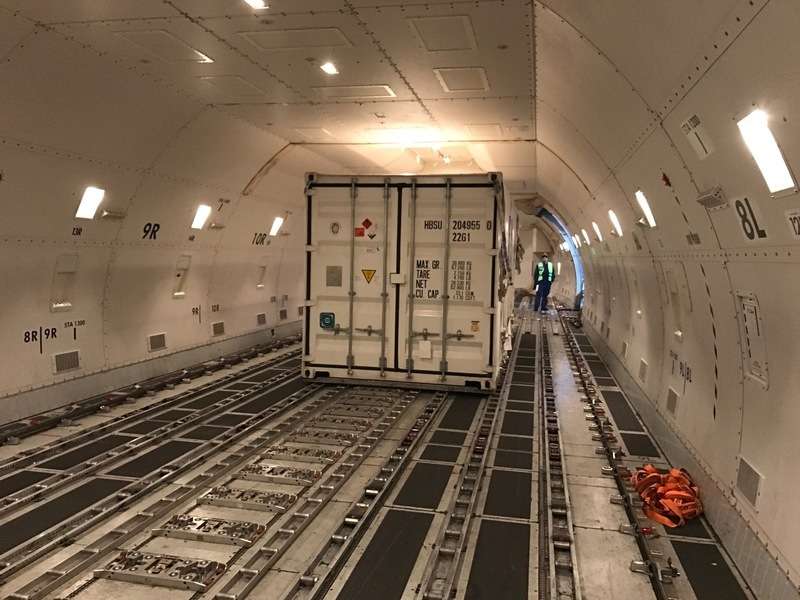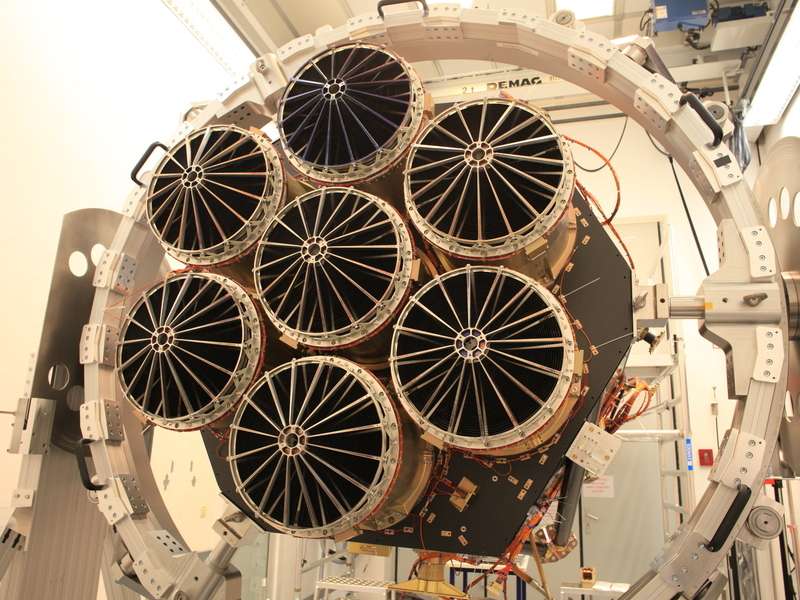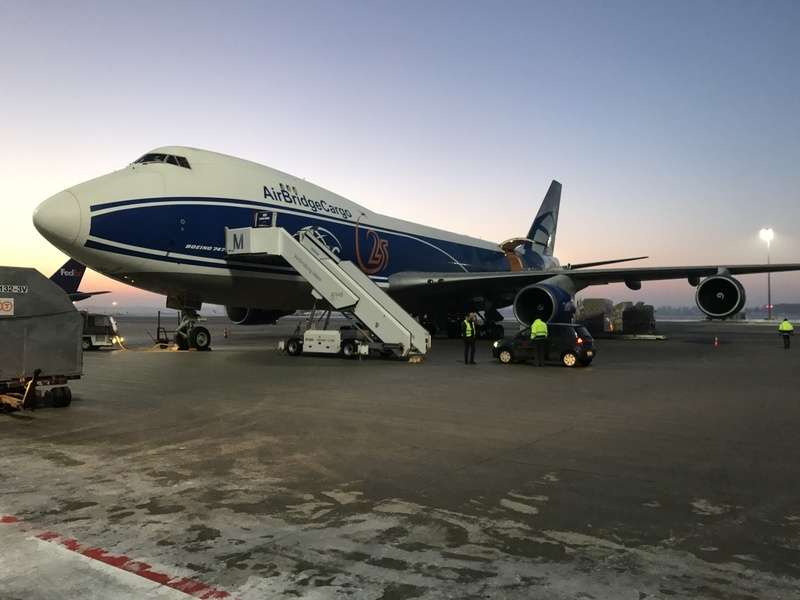eROSITA travels to Russia for launch into deep space in 2018

On 20 January 2017, the completed eROSITA X-ray telescope boarded a cargo plane and was transported from Munich, where it had been built at the Max Planck Institute for Extraterrestrial Physics, to Moscow. Like any other passenger, it had to pass customs before journeying onwards towards the premises of Lavochkin Association, in the Moscow suburb of Khimki, where it is expected to arrive on 25 January. There it will be further tested and integrated with the 'SRG' spacecraft in preparation for launch in spring 2018. It will then take another three months to arrive at its final destination, about 1.5 million kilometres from Earth. From there, eROSITA will produce a new map of the Universe in X-rays, revealing how the largest cosmic structures evolve.
"It was an exciting moment to send eROSITA on its way, after so many years of intense development and integration," states Dr. Peter Predehl, the Principal Investigator of eROSITA at the Max Planck Institute for Extraterrestrial Physics (MPE). "Since officially starting the project in 2007, more than a hundred people have been working on its various components, many of which had to be developed from scratch, tailoring them precisely to our scientific needs and to the very inhospitable environment of space. It is probably one of the biggest projects that our institute ever embarked on, and hopefully will be a worthy successor to ROSAT." eROSITA will be 25 times more sensitive than the ROSAT X-ray telescope, which was also built under the scientific leadership of MPE, and which performed the first deep all-sky survey in X-rays in the 1990s.
The eROSITA X-ray space telescope consists of seven identical mirror modules with 54 nested gold-coated mirrors each, manufactured very precisely to collect the high-energy photons and guide them to the X-ray sensitive cameras placed at their focus. These cameras have also been developed and custom-built at MPE, containing special X-ray CCDs manufactured from high-purity silicon. For maximum performance, these cameras have to be cooled to -90°C using a complex heat pipe system.

"With its much higher sensitivity than previous survey missions, eROSITA will discover a multitude of new X-ray sources," expects Dr. Andrea Merloni, eROSITA project scientist. "We will be able to study not only the distribution of clusters of galaxies – eROSITA will detect more than 100,000 of these most massive bound objects in the Universe – but also millions of active black holes at the centres of galaxies, as well as rare objects in the Milky Way, such as isolated neutron stars. The survey will thus provide new insights into a wide range of high-energy astrophysical phenomena – maybe even reveal some completely new phenomena – and give us new clues about the mysterious "Dark Energy", the force behind the accelerated expansion of the Universe."
After assembly, eROSITA travelled 30 kilometres from MPE to IABG in Ottobrunn for final testing in Germany, then 50 kilometres to the Munich airport and now about 2300 kilometres to Khimki and the Lavochkin Association – about half its journey on Earth. There it will be further tested and integrated with the spacecraft Spectrum-Roentgen-Gamma (SRG), which also carries the Russian telescope "ART-XC". Both instruments will be launched with a Proton rocket from the Russian launch site Baikonur in Kazakhstan after another 2600 kilometre transport. Leaving Earth behind, eROSITA will then travel to the second Lagrange point (L2) of the Sun-Earth system, at a distance of about 1.5 million kilometres. Once there, eROSITA will perform a total of eight surveys of the entire sky over a four years period.
"The science always drove the design and development of the telescope," emphasises Peter Predehl. "The exciting opportunities for discovery that eROSITA will provide – this is what kept us going even when we got stuck with yet another technical problem to be solved. The whole team really can be proud to deliver the telescope to Russia!"

Provided by Max Planck Society


















